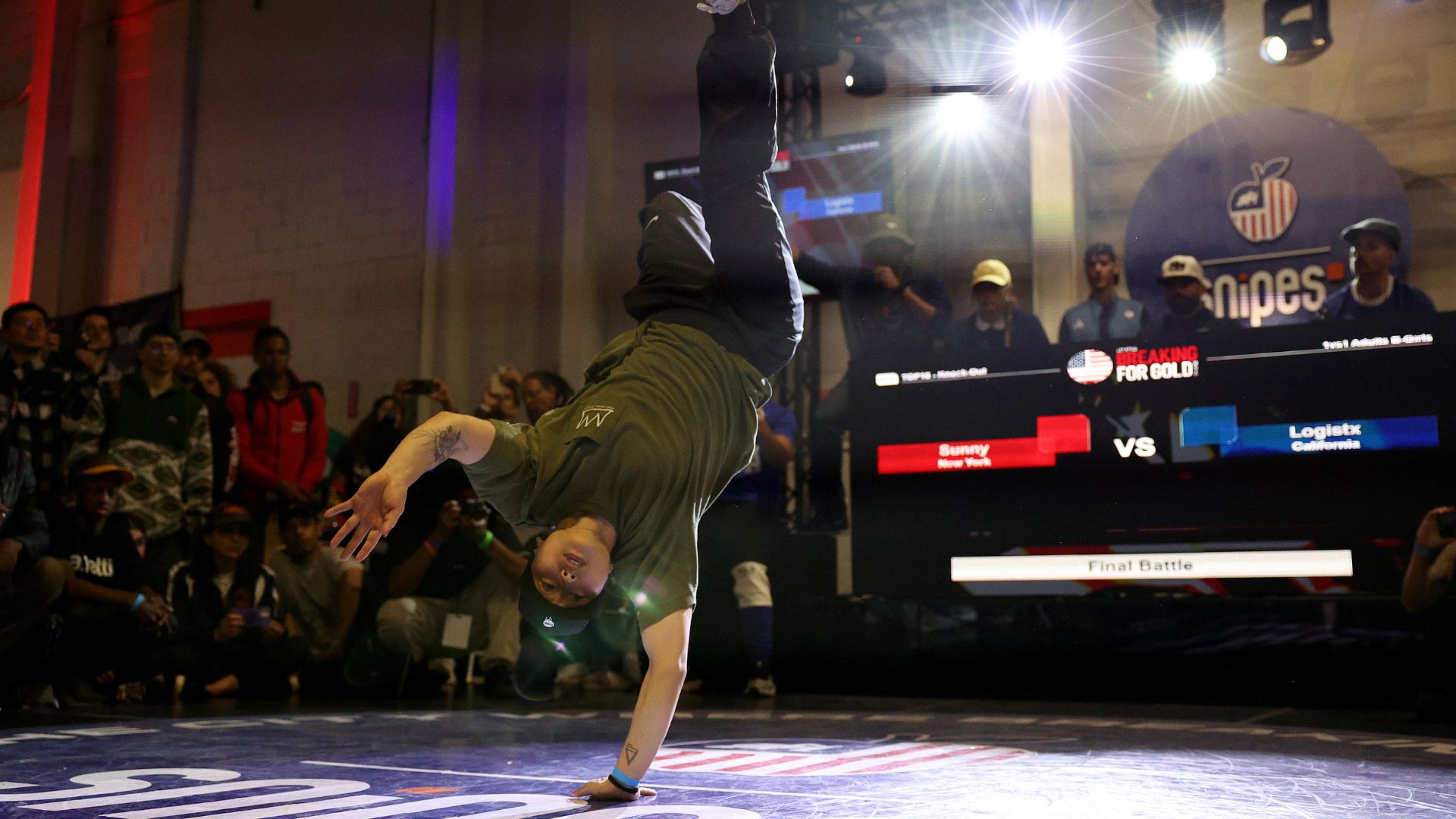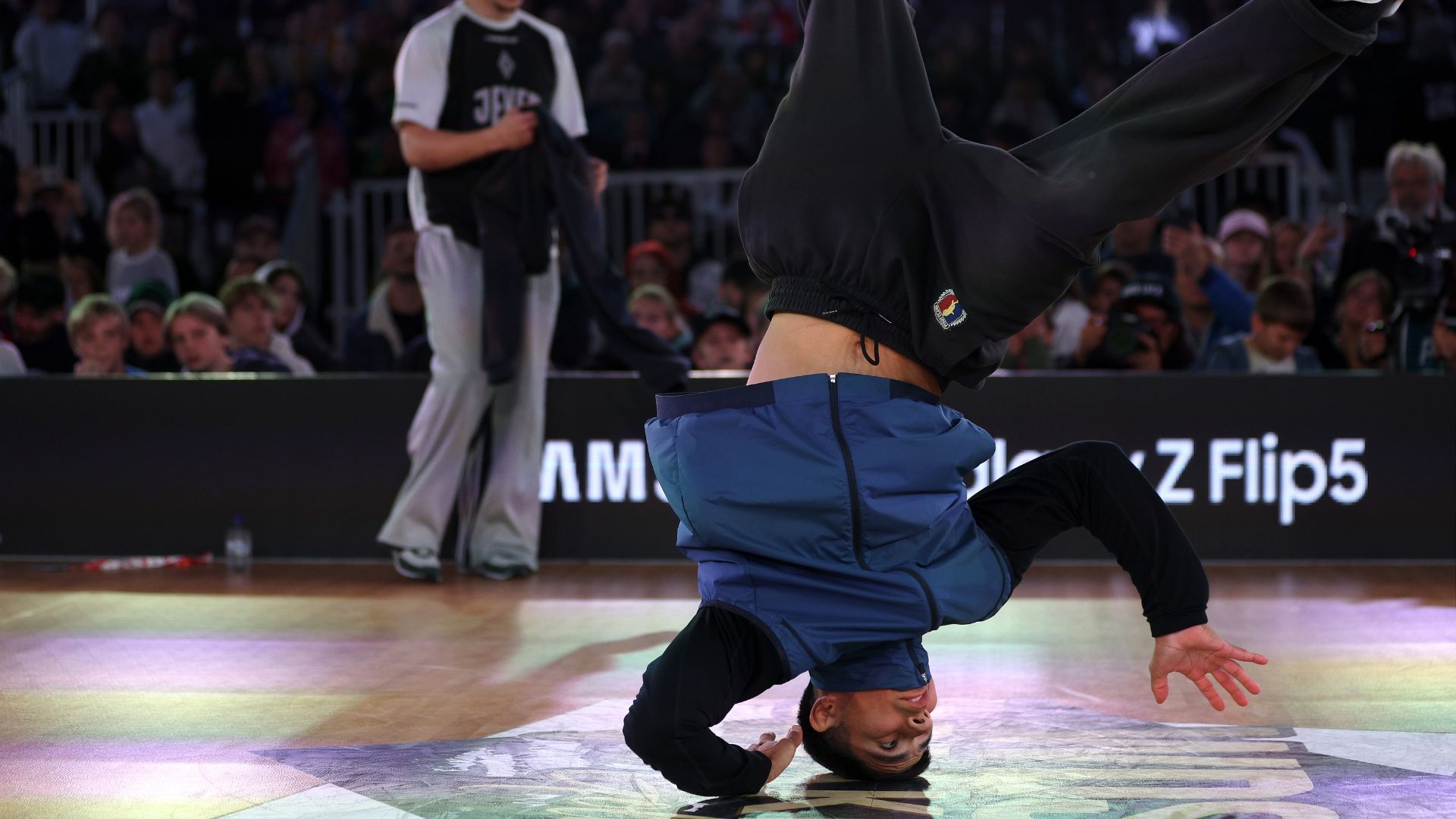
An event premiering at the 2024 Paris Olympics showcases athletes performing rhythmic footwork, popping into inverted poses supported on one hand, and spinning on the tops of their heads.
That's right: Breaking, widely popularized as "breakdancing," has made its Olympic debut.
As with other athletic events that involve intricate movements and explosive acrobatics, some remarkable brain science underpins dancers' ability to perform this style. In particular, such dance training triggers changes in the vestibular system, a sensory system that's crucial for our sense of balance.
This system is responsible for tracking the acceleration of the head through space as it moves, said Maxime Maheu, an assistant professor at the University of Montreal and a researcher at the Center for Research in Interdisciplinary Rehabilitation. Thus, the vestibular system is especially important for dance styles that involve rotations, such as pirouettes.
"I would tend to say that breakdancers would probably show similar findings," Maheu told Live Science in an email. "As long as the vestibular system is challenged repetitively, I would think we could find similar results."
Related: At what age does athleticism peak in different sports?
The science behind breaking
Breaking originated in the Bronx in New York City in the 1970s and remains a core element of hip-hop culture to this day. It incorporates movements performed standing up and others performed on the ground, as well as moves that transition between the two levels.
It features freezes, which are "powerful and impactful poses" in which the breaker often balances on their hands, elbows or head, said Chadwick Gaspard, an Los Angeles-based dancer who's currently working with Jacob Jonas The Company. Breakers also whip out power moves that involve rapidly flipping and twisting their bodies; spinning on top of their heads; or swinging their legs through the air. "It's like the 'wow' or 'statement piece' of breaking," Gaspard said of power moves.
Especially as you watch power moves unfold, you might wonder how Olympic breakers keep their bearings as they rapidly spin and twist. That's where the vestibular system comes in.
Maheu studies the inner workings of the vestibular system, partly to help patients with chronic dizziness and other conditions that disrupt balance. He's conducted several studies comparing dancers to people without dance training to see if the dancers' unique nervous systems could inform vestibular rehabilitation programs.
He's looked at the vestibulo-ocular reflex (VOR), an involuntary reflex that moves the eyes to stabilize the visual field during head movements. The VOR kicks in when you focus on a fixed point — say, a poster on a wall — while quickly turning your head. However, the VOR is suppressed when you track a moving object — like a passing car — while simultaneously moving your head in the same direction.
In a 2023 study in the Journal of Neurophysiology, Maheu and colleagues worked with professional ballet dancers with 10 to 20 years of experience. The dancers were asked to focus on a fixed point while a researcher quickly turned their heads to one side. In a comparison group of nondancers, the eyes moved at an equal velocity to the head but in the opposite direction to keep their gaze on target. However, dancers' eyes moved slightly faster than the head did for the first millisecond it was moving.
Related: What's happening inside Simone Biles' brain when the 'twisties' set in?

This suggests the VOR can potentially be enhanced with training. "We don’t know for sure how dance training may explain this result, but it could offer interesting new paths to follow for vestibular rehabilitation," Maheu said.
In addition, a 2018 study by the same group found that dancers can more easily suppress their VOR when needed, compared with nondancers. In this study, the dancers had been trained in a range of styles — including salsa, ballet, modern and hip-hop — and were asked to track a moving target as their heads were also moved.
"They did not completely switch off the VOR but were able to move their eyes earlier to correct [their focus]," Maheu said. This difference between the nondancers and dancers grew with experience; dancers with more than 10 years of training showed the most efficient VOR suppression.
The team ran another study with these same dancers, but this time, the dancers and nondancers were pitted against each other in a balance test. This test is designed to reveal whether a person is relying more on visual cues, sensations from the body or the vestibular system to maintain their balance. The dancers appeared to rely less on vestibular reflexes and more on other cues, especially vision, to outperform the nondancers.
These latter two studies included only a small group of people, so that makes their results less certain. However, this overarching idea that dance training changes the vestibular system is also backed up by brain scans.
For instance, a 2014 study of ballet dancers, figure skaters and slackliners (who practice something similar to tightrope walking) found similarities between these athletes' brains and the brains of people with vestibular impairments. The study looked at the density of white matter tracts — the insulated wires that connect brain cells — and found that areas of lower-than-average density overlapped in the two groups' brains. These overlapping tracts were involved in a wide range of functions, including sensation processing and movement control.
Why would people with severe balance problems show the same white-matter patterns as certified balancing experts? One explanation is that "both [groups] might need to suppress or reinterpret vestibular input to maintain balance," the study authors suggested. For instance, "ballet dancers reduce vestibular responses to increase balance during a pirouette."
In short, reacting too strongly to vestibular cues during a turn might be detrimental, making a person dizzier.
Related: Will Olympic athletes ever stop breaking records?
Beyond the vestibular system
It's likely that these distinct changes in the vestibular system would show up in highly trained breakers, too, Maheu proposed. But, of course, it isn't just the vestibular system that enables breakers to perform impressive feats.
Similar to elite gymnasts such as Simone Biles, breakers repeatedly practice sequences of movements, gradually increasing the complexity to build confidence and muscle memory. Studies suggest that, over time, complex movement sequences become encoded in a single, efficient burst of brain activity. This may help to explain why trained athletes don't have to consciously think about every little thing their bodies are doing to stay in control.
When learning to do head spins, breakers start with quarter turns and half turns before working up to full turns and multiples, said Gaspard, who started breaking about a decade ago, training in South Florida with the Street Masters Crew and others.
"As you keep increasing the amount of turns that you can do — at first you'll be dizzy, but at some point, like there'll be less and less dizziness until you start drilling out like a crazy amount," he said.
In regard to being upside down, "maybe within a few weeks or months, being inverted isn't as daunting," Gaspard added.
The most exciting part of seeing breaking in the Olympics is that "this culture that I've been a part of is getting a lot of limelight and exposure to a wider audience," Gaspard said. Breakers have gained new acclaim and work opportunities in recent years and now, "their art is in the Olympics."
Ever wonder why some people build muscle more easily than others or why freckles come out in the sun? Send us your questions about how the human body works to community@livescience.com with the subject line "Health Desk Q," and you may see your question answered on the website!







